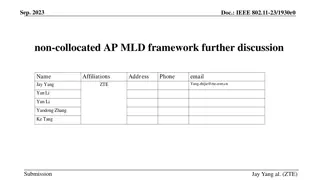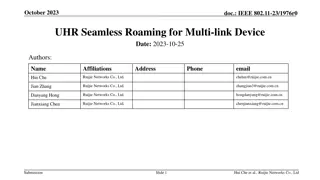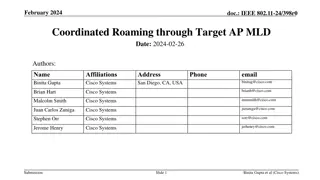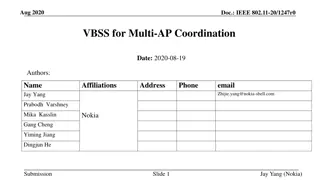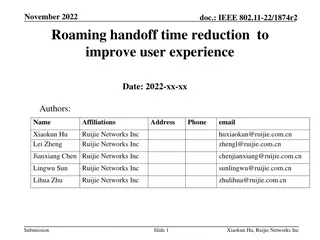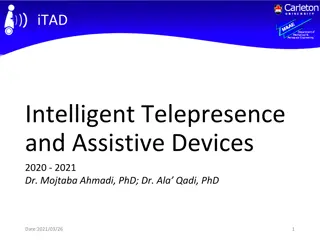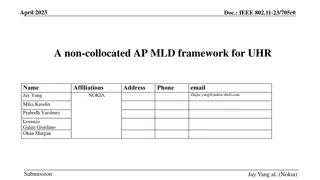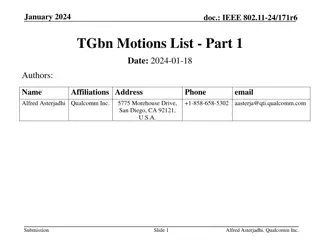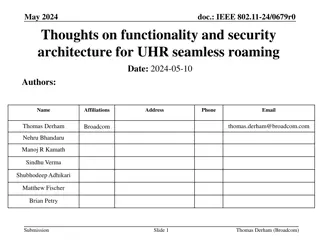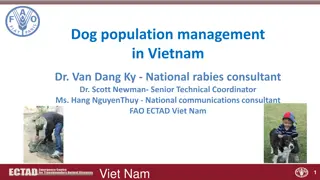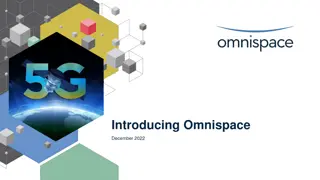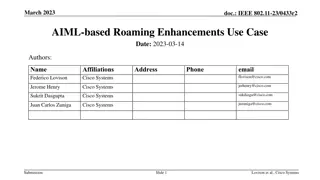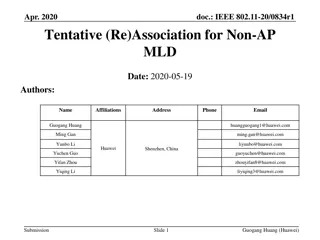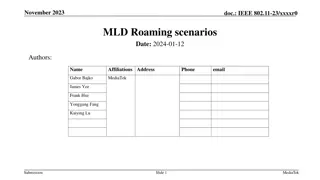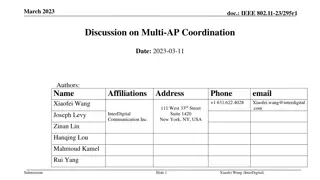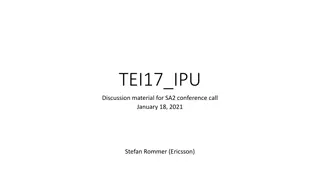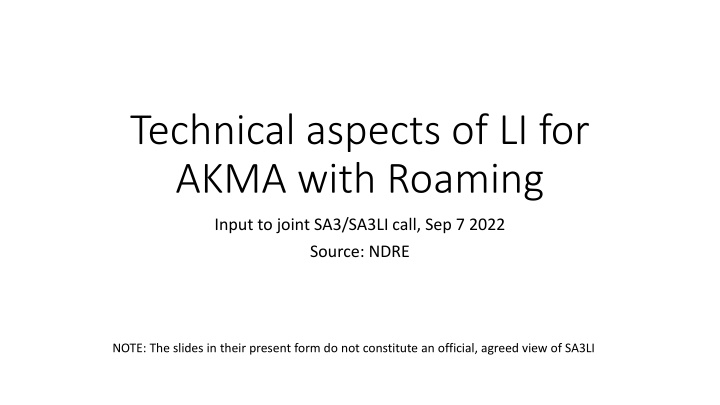
Technical Aspects of LI for AKMA with Roaming Input to Joint SA3/SA3LI Call
Explore the technical aspects of Lawful Interception (LI) for Authenticated Key Management Architecture (AKMA) with roaming input in the joint SA3/SA3LI call. Understand the implications on cryptographic parameters, decryption means, and interface usage to ensure secure communication across different CSPs and jurisdictions.
Download Presentation

Please find below an Image/Link to download the presentation.
The content on the website is provided AS IS for your information and personal use only. It may not be sold, licensed, or shared on other websites without obtaining consent from the author. If you encounter any issues during the download, it is possible that the publisher has removed the file from their server.
You are allowed to download the files provided on this website for personal or commercial use, subject to the condition that they are used lawfully. All files are the property of their respective owners.
The content on the website is provided AS IS for your information and personal use only. It may not be sold, licensed, or shared on other websites without obtaining consent from the author.
E N D
Presentation Transcript
Technical aspects of LI for AKMA with Roaming Input to joint SA3/SA3LI call, Sep 7 2022 Source: NDRE NOTE: The slides in their present form do not constitute an official, agreed view of SA3LI
Scenario in scope AUSF AF AAnF UPF HPLMN NOTE 1: LI-solution for non-roaming case exists in 33.127 VPLMN UPF AMF/SEAF NOTE 2: The roaming case with AF in VPLMN believed straightforward AKMA-enabled encryption NOTE 3: AF could also be in external DN, this is out-of-scope/FFS UE (outbound roamer from HPLMN)
Most relevant requirements (TS 33.126) R6.4 - 175 subscriber is roaming, independently of whether or not the subscriber is an LI Target in the VPLMN, the home CSP shall provide to the visited CSP the means to decrypt user services which are encrypted between the ME and an entity outside the visited CSP and using cryptographic parameters established in the home CSP. R6.4 - 180 Retroactive Decryption - The CSP shall ensure that the crypto keys, algorithm and parameters delivered to the LEA enable the LEA to decrypt encrypted Target Communications retroactively. R6.4 - 190 Mid Communication Interception - The CSP shall retain sufficient key material for the duration of any communications such that it is possible to decrypt already on going communications, when using CSP provided or managed encryption. R6.6 - 50 Undetectability across CSPs - The CSP shall be able to perform interception such that no CSP not obligated by the warrant can detect that interception is taking place. CSP provided cryptographic parameters in roaming When a home CSP s
Implications on information & functionality cryptographic parameters , means to decrypt needs to comprise: Selected encryption algorithms / cipher suite All inputs to encryption algorithms: key(s), nonce(s), counter(s), etc undetectability across CSPs + retroactive decryption The parameters have to be provided from HPLMN always and for all outbound roamers (regardless of whether they are LI Targets in HPLMN or not) undetectability across CSPs + mid communication intercept crypto parameters needs to be provided as soon as the AKMA context is established Last but not least: The AKMA roaming architecture should define a point of decryption in the VPLMN (e.g. a middlebox in a UPF)
Implications on interface usage We wish to avoid interfaces between LI domains of two different CSPs as it jeopardizes security/undetecability across CSPs/jurisdictions Therefore, the transfer of cryptographic parameters should to be integrated into a normal signaling (SBI) interface between HPLMN and VPLMN Potential idea: transfer keys/parameters from one of {AUSF, AAnF, AF} in HPLMN to AMF/SEAF in VPLMN The SEAF can then provide the parameters to the VPLMN point of decryption
Final aspects Some of the crypto parameters may only be known at AF E.g. nonce, selected cipher suite, etc Standard TLS cipher suites might include Diffie-Hellman derived key material, so AKMA-specific keys only might be insufficient Provide all necessary key material or simply avoid DH cipher suites

